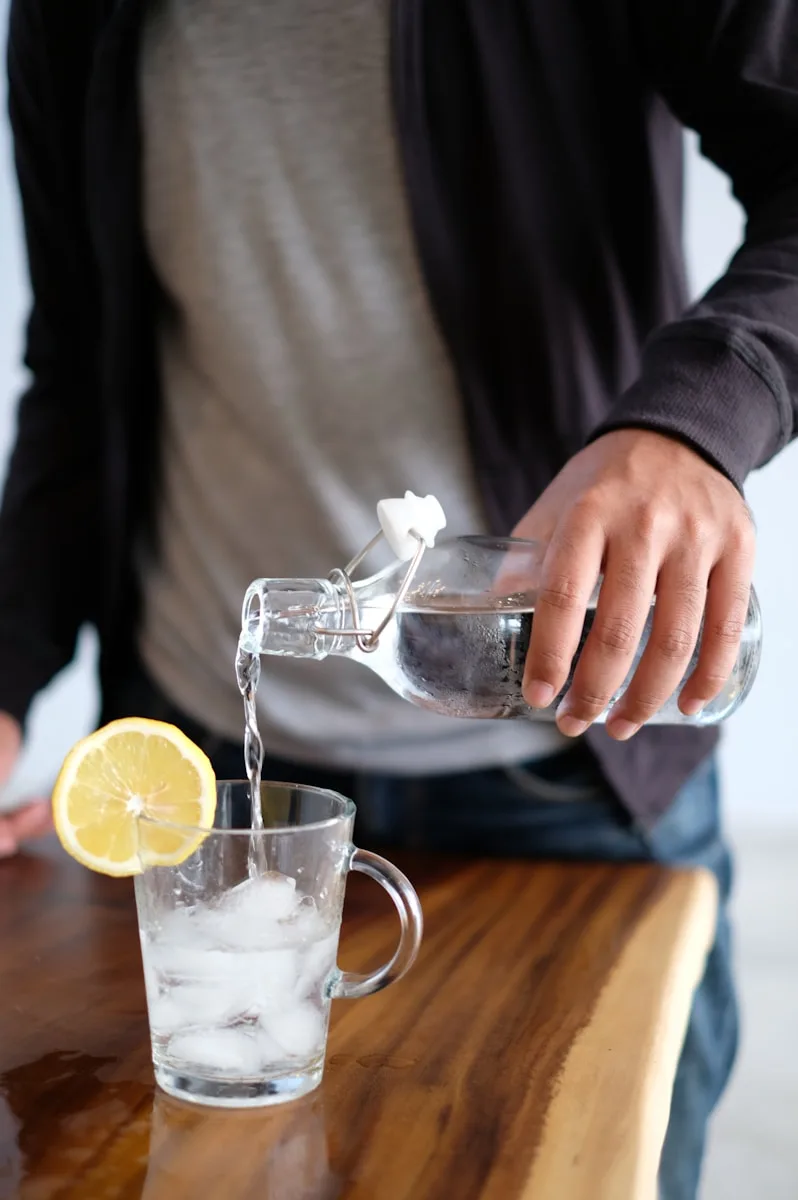Table of Contents
Bottled water is considered by many to be safer and purer than tap water, it has become a common sight in our daily life.
But when you take a closer look at the bottled water business, you’ll discover some shocking facts that will make you reconsider before picking up your next bottle.
The Environmental Working Group’s Eye-Opening Study

The Environmental Working Group (EWG) evaluated the safety and purity of ten well-known bottled water brands in ground-breaking research (Ref).
The findings were concerning: Each brand contained an average of eight different pollutants, from acetaminophen and caffeine to solvents, fertilizers, plastic-derived compounds and strontium.
Two brands that stood out for unusually high levels of contamination were Sam’s Choice from Walmart and Acadia from Giant Foods. In fact, it was found that Sam’s Choice sometimes contained more contaminants than California required for bottled water purity.
The Tap Water Deception

Perhaps the most startling finding of the EWG study is that about 64% of the bottled water sold in the US actually comes from municipal tap water. This suggests that a large number of consumers are paying more for the free water they get from their kitchen sinks.
Well-known companies including Nestlé Pure Life, Dasani and Aquafina use public water bodies as their water source. Frequently, contaminated water is bottled and sold to consumers without further treatment or filtering.
EWG’s Criteria for Evaluating Bottled Water Brands
Three main criteria were used by EWG to evaluate the transparency and quality of the top 10 domestic bottled water brands in the United States:
- Water Source Disclosure: Is the location of the water source on the label disclosed by the brand?
- Purification Techniques: Does the brand disclose on the label the steps used to purify and purify the water?
- Water quality testing: Does the company make the results of its water quality tests, including substances detected, available to the public?
According to EWG, most businesses neglect to provide this important information to consumers. Only three brands—Penta Ultra-Purified Water, Gerber Pure Purified Water, and Nestlé Pure Life Purified Water—received the highest rating for transparency in 2011.
EWG’s Recommendations for Bottled Water Brands & Consumers

The EWG issued the following important recommendations for bottled water companies as well as consumers in light of their findings:
- Companies selling bottled water must mark all their products with the exact source of the water and the treatment methods used.
- Water treatment processes must be listed on the label, and companies must provide clear, accurate information about the location and source of water, as well as make water quality reports that disclose all test results freely available.
- Companies selling bottled water are required to conduct tests to detect contaminants that may leach from plastic bottles.
- Bottled water companies that report water quality, specify treatment methods, and clearly disclose the source of the water they come in at a distant second should filter tap water be the primary choice for consumers.
The Risks of Microplastics & Other Contaminants

In addition to the contaminants identified in the EWG report, other studies have raised concerns over the presence of microplastics in bottled water. Research by Orb Media (ref) found microplastic particles in 93% of bottled water samples globally, which can come from the container itself.
The Regulation Gap: Bottled Water vs. Tap
It is a frequent misconception that tap water is less regulated than bottled water, but this is not always the case. Although bottled water is regulated by the Food and Drug Administration (FDA), it is not necessarily safer than tap water.
On the other hand, under the Safe Drinking Water Act, the Environmental Protection Agency (EPA) has strict regulations on municipal tap water. This means that compared to bottled water, tap water is put through more rigorous testing and monitoring.
Furthermore, since bottled water companies are not required to disclose their water sources, treatment techniques, or contamination test results, it is challenging for consumers to make informed decisions about the water they consume.
Embracing Alternatives: Filtered Tap Water & Reusable Bottles

Many people are looking for alternatives to bottled water because of the potential dangers and environmental damage associated with it. One of the most commonly used options is filtered tap water. Consumers can make tap water safer and more affordable by filtering out pollutants and impurities with a high-quality water filter.
An additional option is to use a reusable water bottle. People can reduce their dependence on single-use plastic bottles and help create a more sustainable future by adding filtered tap water to a reusable bottle.
Don’t Miss: The Facts About U.S. Tap Water: States With Best & Worst Quality
Be Informed About the Water You Drink
Most people have a false belief that bottled water is safer and purer than tap water. Several studies, including a study by the Environmental Working Group, have shown that bottled water can contain a variety of impurities, and that a large percentage of it comes from municipal tap water.
Furthermore, the opaque nature of the bottled water market and more stringent laws governing tap water make it challenging for people to make educated decisions about the water they drink.
People can ensure they consume safe, clean water by using reusable water bottles and filtered tap water and reduce their environmental impact. It’s time to move away from bottled water and towards healthier, more environmentally friendly alternatives.
READ | Drink Water First Thing In The Morning : 5 Reasons

